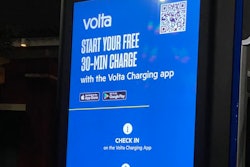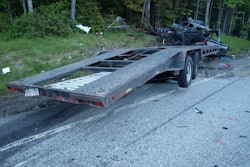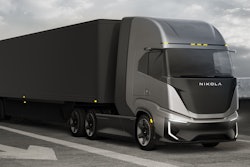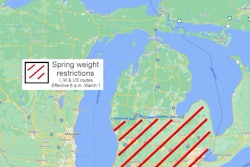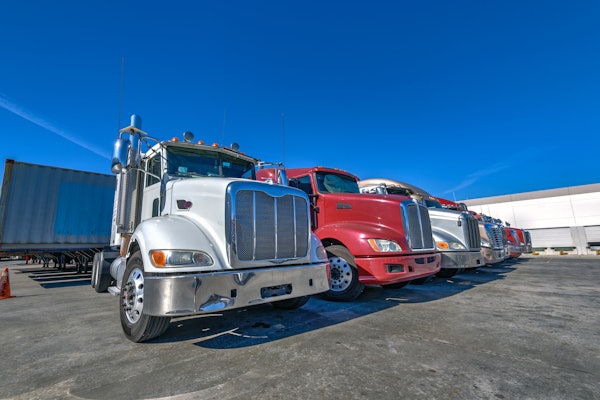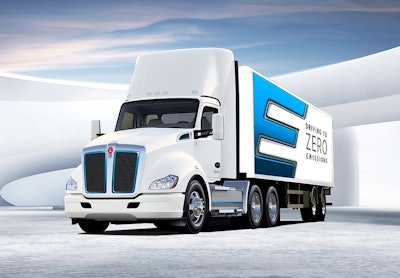
It seems like every argument on zero emission trucks devolves into a simplistic “this versus that,” as if we as an industry can’t seem to handle anything more than the context of a football game outcome. This industry handles much more complex situations daily.
The team at the North American Council for Freight Efficiency has written extensively on the benefits and challenges of battery electric, fuel cell electric and a variety of other hybrid electric vehicle technologies through our series of Guidance Reports. Our conclusion is that there is no one solution in the near-term and that likely many competing technologies will have market share. We labeled this the "messy middle," a phrase I first heard from Steven Hamburg, chief scientist at the Environmental Defense Fund.
RELATED: Daimler, Volvo complete formation of fuel-cell joint venture
Battery electric vehicles (BEVs) will come in many forms, like flavors at an ice cream parlor. Vehicles may even be combinations of flavors – a parfait – or what the industry calls hybrids. Fuel cell electric vehicles (FCEVs) are generally definable as hybrids because in nearly all cases they combine a battery electric vehicle with on-board power generation through a hydrogen fuel cell. Another way to look at this is that a fuel cell vehicle is a range extended battery electric one.
That last description highlights that BEVs and FCEVs are likely optimized for different purposes and different duty cycles. Just as with today’s fleets having straight trucks, 4x2, 6x4, day cabs and sleeper cabs with a variety of specifications, future fleets may have both battery electric and fuel cell electric tractors.
The trucking industry, utilities and public will benefit from the development of both BEVs and FCEVs. Both BEVs and FCEVs require expansion and modernization of electricity production in the North America, ideally green energy production.
Today less than 1 percent of electricity production goes toward transportation use. As BEVs and FCEVs gain market share, the demand for electricity generation will increase. It’s perhaps clear that BEVs plug into the grid to get energy, but what is frequently lost in discussing FCEVs is that green hydrogen requires electricity to be produced.
Hydrogen may be the most abundant element in the universe, but it demands electricity to cleanly break it free for use in FCEVs. Market penetration of BEVs and FCEVS together will increase demand for growth in utility-level electricity generation and distribution. Increased scale in electricity generation and distribution will put downward pressure on electricity pricing. Greater preference for green energy will accelerate innovation and cost reduction in those technologies.
RELATED: Detroit unveils ePowertrain for electric trucks
Components and subsystems will benefit from both BEV and FCEV development. These two vehicle types share a great deal – such as motors, e-axles, high voltage power cables and connectors, software controls, sensors, high voltage batteries, electric accessories, regenerative braking systems, and more.
All of these are at the start of their heavy vehicle maturation S-Curves and will benefit from experience and fleet feedback from greater diversity of duty cycles and environments. Parallel development of BEVs and FCEVs should help with more rapid improvement in reliability of shared technologies.
Recycling of materials inherent in batteries and other systems will improve with volume. BEVs and FCEVs will both face a need for improved recycling of key components. While some areas will be easier than others, the need to economically dispose of vehicles at end-of-life or end-of-component-life will be there for both.
Displacement of diesel market share will likely improve given a variety of purpose built BEV and FCEV alternatives for fleets. Instead of cannibalizing the market, providing choices will accelerate zero-emission vehicle alternatives much in the same way the co-location of Home Depot and Lowes has generally benefitted overall home improvement sales.
Capital investment decisions on infrastructure have long lives. There is no doubt that fleets installing fueling or charging infrastructure are committing to lengthy relationships with BEV and FCEV systems.
Fleets that invested in CNG fueling and maintenance infrastructure likely have found it easier to make additional purchases of CNG tractors. BEV and FCEV infrastructure investments similarly carry with them some long-term inertia for downstream investment choices. By displacing diesels, there's a net benefit of meeting sustainability goals for companies and communities.
Market forces will continue to drive improvement of BEV, FCEV and other hybrids as it will continue to drive improvement in diesels. The more choices available, the greater the pressure on improvement for all of them, and the greater the pressure on minimizing costs and maximizing performance.
It is not BEV versus FCEV, but rather how both can develop in parallel and each contribute positively to advancing maturity of the other, while each optimizing for their best applications.
Rick Mihelic is NACFE’s Director of Emerging Technologies. He has authored for NACFE four Guidance Reports on electric and alternative fuel medium- and heavy-duty trucks and several Confidence Reports on Determining Efficiency, Tractor and Trailer Aerodynamics, Two Truck Platooning, and authored special studies on Regional Haul, Defining Production and Intentional Pairing of tractor trailers.




